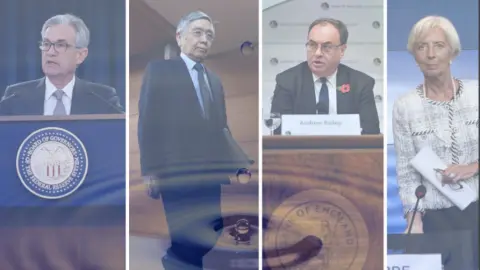Rates Outlook: Swap spreads to see widening pressure
While there is upward pressure on market rates in 2022, it's not coming from higher net supply. In fact, lower net supply can help to richen government bonds. On top of that, we should see flatter curves over the whole of 2022. We also anticipate some upward pressure on USD Libor. And we expect an overshoot in the spread from eurozone to US rates vs equilibrium
US swap spreads with widening pressure in the 10yr
|
Current value
|
Year ahead | 4Q21 | 1Q22 | 2Q22 | 3Q22 | 4Q22 |
|---|---|---|---|---|---|---|
|
10Y USD asw
10bp
|
Wider | 10bp | 10bp | 10bp | 20bp | 20bp |
There are three factors that should contribute to some widening pressure for US swap spreads.
First, there should be less net supply pressure as we progress through 2022, at least versus 2021. Even when we take account of the end of Federal Reserve buying, there is a reduction in overall net supply pressure, to the tune of $0.5t. This should help to richen government bonds in a relative sense.
A flatter curve typically correlates with wider swap spreads
Second, as the Fed hikes rates later in 2022 there should be a clear flattening pressure right along the curve. A flatter curve typically correlates with wider swap spreads on the theory that extensions provide less compensation for spread product, so there is pressure for wider spreads to compensate.
Third, credit conditions are expected to tighten as we progress through 2022. This, in all probability, will place upward pressure on USD Libor rates, reflecting higher required rate prints on financial commercial paper issuance. This should be reflected in upward pressure right along the USD Libor curve.
This also correlates with upward pressure on 3-month USD Libor rates versus 3-month SOFR as we progress through 2022.
EUR swap spreads: scarce bonds and growing liabilities fixing
|
Current value
|
Year ahead | 4Q21 | 1Q22 | 2Q22 | 3Q22 | 4Q22 |
|---|---|---|---|---|---|---|
|
10Y German asw
49bp
|
Neutral | 45bp | 45bp | 45bp | 45bp | 45bp |
Swap spreads aren’t necessarily the area where one would expect central bank tightening expectations to be the most clearly priced in. In theory, this leaves them free to reflect the usual technical factors that normally affect the differential between swap rates and government bonds. This is only true up to a point.
The reduction in ECB excess liquidity should strengthen expectations of wider Euribor-OIS spreads. This could in theory be offset by the cheapening of government bonds as year-end distortions ease and as the ECB tapers its purchase programmes. In reality, we expect bond scarcity to remain largely prevalent throughout 2022 with no meaningful ability to impact swap spreads with a durable effect, save for a knee-jerk cheapening in early January as bank balance sheet constraints ease.
Bond scarcity has boosted the directionality of short-end swap spreads and we expect this dynamic to spread to longer tenors
Investors hedging behaviour will gain in importance as 2022 progresses. Bond scarcity has boosted the directionality of short-end swap spreads (widening on greater hike expectations) and we expect this dynamic to progressively spread to longer tenors as borrowers increasingly see the appeal of fixings their liabilities. This factor is the hardest to quantify as it mostly depends on whether and when the reality of higher rates dawns on market participants but, as the year progresses, we expect the consensus to move in that direction, keeping swap spreads at wider levels than in the past year.
Demand to fix liabilities will keep EUR swap spreads wide
US versus Euro market rates: Widening pressure
Room should be made for hikes through 2022, with the US 10yr pivoting higher first in the first quarter. The current spread from the Euro 10yr to the US 10yr is 145bp. We expect this to stretch to 175bp as the US macro story and forward rate hike narrative leads the eurozone one.
From the second quarter, front end rates in both the US and eurozone should come under upward pressure, re-flattening curves. As this will be led by the US 2yr, its spread versus the eurozone 2yr should come under widening pressure. The current eurozone to US 2yr spread is 120bp. We can see this stretching to the 200bp area.
Both the 2yr and 10yr spreads between the eurozone and the US will find a more natural equilibrium in the 150bp area
Both the 2yr and 10yr spreads between the eurozone and the US will find a more natural equilibrium in the 150bp area, which by extension points to the above widening targets as overshoots. This 150bp valuation is not overly stretched as we'd continue to identify a buying/receiving pressure on US rates reflecting their relative elevation versus comparables.
This publication has been prepared by ING solely for information purposes irrespective of a particular user's means, financial situation or investment objectives. The information does not constitute investment recommendation, and nor is it investment, legal or tax advice or an offer or solicitation to purchase or sell any financial instrument. Read more
Download
Download article
9 December 2021
Rates Outlook 2022: The liquidity overflow recedes This bundle contains 7 Articles
